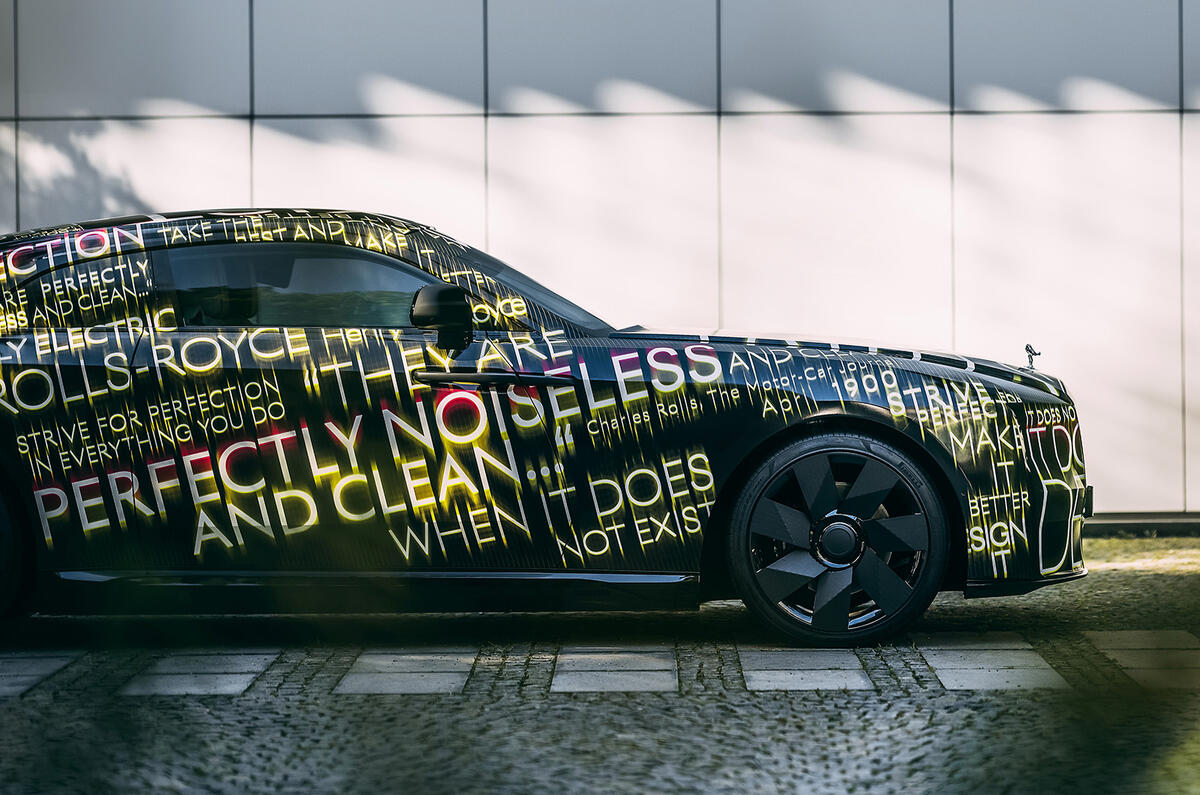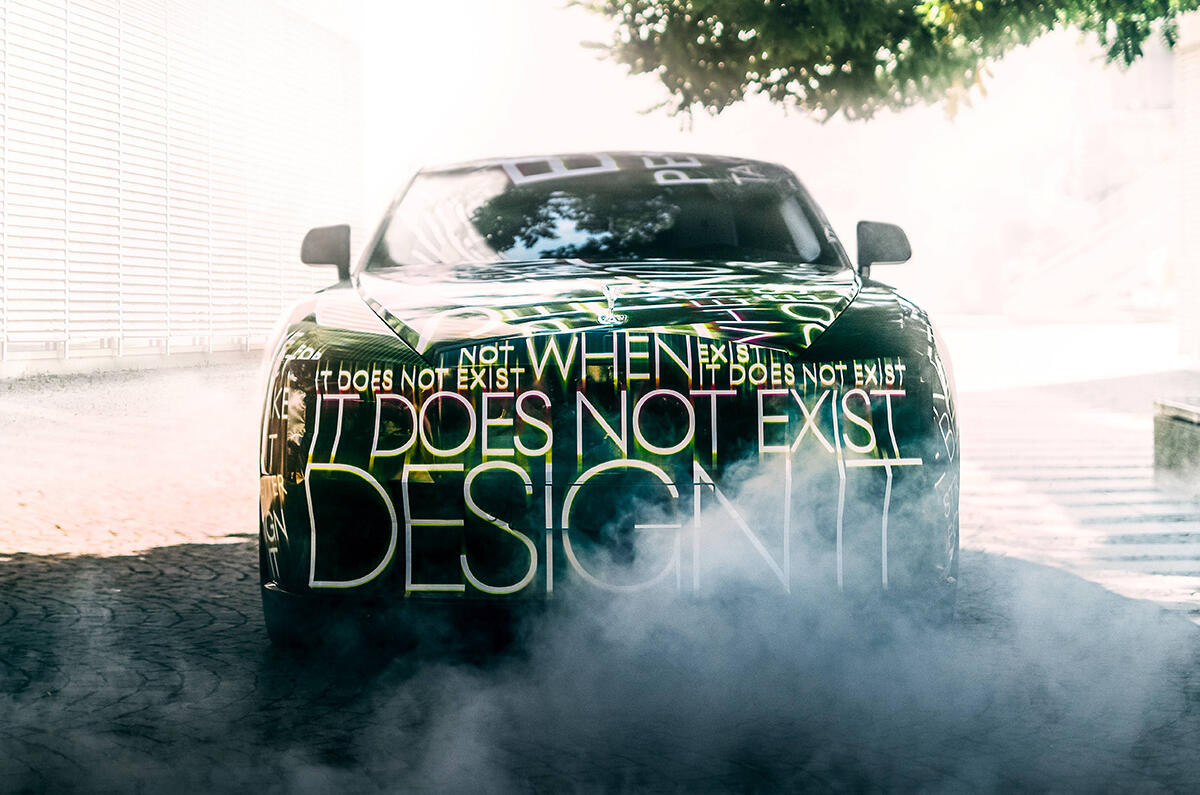Rolls-Royce will launch its first series-production electric car in late 2023 and has pledged to phase out combustion engines across its entire line-up by 2030.
The first product to emerge from this rapid-fire electrification strategy will be the all-new Spectre, which has been previewed ahead of the 'imminent' start of what will be a highly publicised on-road development programme.
Read more: Rolls-Royce Spectre review
Seemingly based on the Rolls-Royce Wraith coupé, the development prototype is adorned with one of the best-known quotes from company co-founder Sir Henry Royce: "Strive for perfection in everything you do. Take the best that exists and make it better. When it does not exist, design it." The quote's presence is likely to be a nod to the Spectre's totally bespoke mechanical make-up, which, Rolls-Royce claims, will be "free of any group sharing strategy".
Rather than using the Cluster Architecture (CLAR) platform that underpins parent company BMW's new i4 and iX EVs, Rolls-Royce is sticking with the modular 'Architecture of Luxury' aluminium spaceframe, used for the current Rolls-Royce Phantom and Rolls-Royce Cullinan, that will eventually underpin all Rolls-Royce models.
Company CEO Torsten Müller-Ötvös explained that the platform is "scalable and flexible", allowing for its use in a variety of vehicle segments and "was created to form the foundation of not just different internal combustion engine models, as it now does with Cullinan and Ghost, but models with completely different powertrains."
He said the platform – which brought significant improvements in terms of weight, refinement and rigidity to the eighth-generation Phantom – was developed from the start to accommodate an electric powertrain, in addition to the BMW-developed V12, which has featured in Rolls' line-up in various iterations since 1998.
Details on what exactly will power the Spectre remain under wraps, and when pressed by Autocar, Ötvös said only: “We would never use an existing car from the BMW Group and convert it into a Rolls-Royce. That doesn’t work for us.” However, it stands to reason that the 600bhp-plus twin-motor system deployed in the forthcoming BMW iX M60 could find its way into the luxury brand’s models, as it roughly matches the output of the Goodwood firm’s twin-turbocharged 6.6-litre V12.
As for the design of the final product, Ötvös suggested to Autocar that prototypes will give further clues when they hit public roads in the coming weeks, but “what you basically see is what you will later get”. Camouflage obscures most of the test car’s defining features, but the CEO confirmed that it will retain its “fastback-oriented” design into production, which means it will initially sit relatively unrivalled in the nascent electric luxury coupé segment.
A series of test cars will be built for the two-year testing programme and will cover more than 150 million miles, equating to roughly 400 years of use, Rolls-Royce says. The beginning of on-road development comes just over a decade after the firm showed off the experimental Phantom-based 102EX concept, with a twin-motor powertrain providing 384bhp and a 71kWh battery pack giving a claimed 120-mile range.
The much more radical 103EX concept arrived in 2016 with nearly double that power output and a raft of clues as to how the company will adapt its traditional design cues to suit electric cars.













Join the debate
Add your comment
I remember reading that with their new platform, they had originally built it to accommodat BEV hardware, so no surprise with this announcement. The silly part was all that business, that they would never use another car from the BMW Group to build their vehicle from, but the first Phantom, Ghost and other derivatives were just that! The questions I have, though, are first, with this CLAR platform, Rolls Royce said that they had to add weight to their new Phantom built from those new set of bones. Saying that to get the riding and handling balance that the brand is known for, they needed to add the additional heft. This always seemed counter intuitive, but especially now that this will be the architecture of choice for their series of BEVs. The next question is whether their BEVs will sit on the same foot print as their ICE brethren? Compared with ICE, EVs can do the same or a lot more internally and be a lot smaller externally, so will they need to be such big cars? Finally and the most important question, with Rolls Royce having one of the most recognizable radiator grills, what will they do, how will their vehicles look without one!
Wow that wrap is about as as classy as ginger politician at a Labour conference smoking a fag